Water fountains are a great way to stay hydrated when you’re on the go. But do you know where the water in your local fountain comes from? And is it safe to drink?
Public water is supposed to be safe to drink, but that doesn’t mean it always is. In most cases, public water fountains aren’t filtered, and many are breeding grounds for bacteria and other dangerous contaminants.
If you’re curious about the safety of your local drinking fountains or want to learn more about how they work, keep reading. This guide will cover all the information you need to know, and offer some tips on how to safely drink from a public fountain.
Table of Contents
- ⛲ Where Does the Water in Public Drinking Fountains Come From?
- 💧 Is it Safe to Drink from Public Drinking Fountains?
- 🦠 What Pathogens Are Potentially Present in Public Water Fountains?
- 🧫 How Do Water Fountains Become Contaminated?
- 🚰 When Should I Drink from a Public Water Fountain?
- 📰 How Can I Safely Drink from a Drinking Fountain?
⛲ Where Does the Water in Public Drinking Fountains Come From?
In most parts of the world, public water fountains get their water straight from a nearby water main rather than a well. In North America and some other regions, this means the water comes from a municipal supply.
Public water fountains are often supplied from the same place as your tap at home, and the water isn’t usually filtered before you drink it (although some public water fountains contain special filters).
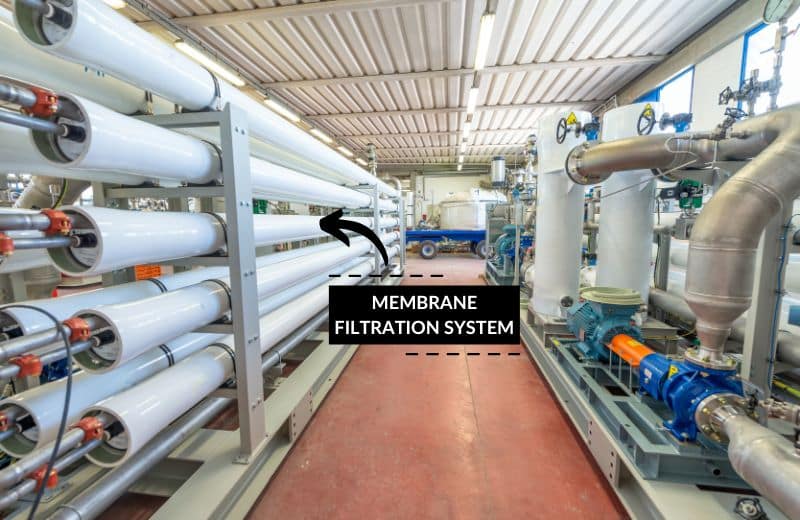
💧 Is it Safe to Drink from Public Drinking Fountains?
We know that municipal water is safe to drink. So does that mean it’s safe to drink municipal water from water fountains?
To answer this question, we need to look at the safety of municipal water itself, and safety of the public drinking fountains that hold this water.
Municipal tap water typically contains chlorine to kill bacteria. This is a good thing, but chlorine can cause side effects when ingested in large amounts over time. Municipal water also contains trace amounts of hundreds of other contaminants, including lead, fluoride, nitrates, VOCs, and industrial chemicals. You can learn more about the common drinking water contaminants here.
How safe is the water in public drinking fountains? A public water fountain contains untreated, unfiltered municipal water. This water can sit stagnant in the fountain for several hours or days before it is used. This means the fountain is a potential breeding ground for harmful bacteria and other contaminants.
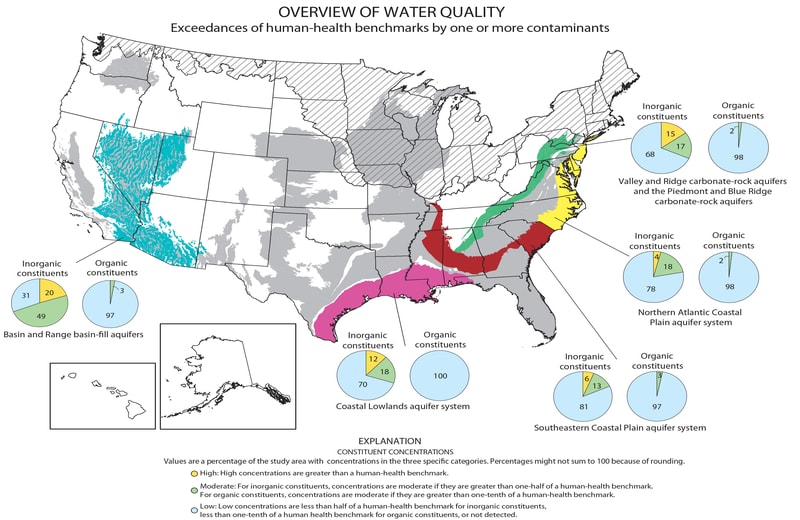
🦠 What Pathogens Are Potentially Present in Public Water Fountains?
Public drinking fountains aren’t typically tested for bacterial contamination, but they’re often overflowing with dangerous germs.
Some of the most common drinking water fountain contaminants are:
Norovirus
Norovirus is a highly contagious virus that causes acute gastroenteritis. Noroviruses are common in a number of water sources, including drinking water fountains, and typically occur when a septic system contaminates a water supply.
A person infected with norovirus will experience vomiting, diarrhea, nausea, and stomach pain.
Influenza A and B
Influenza A and B viruses can live for up to 48 hours on surfaces. If a person touches a water fountain contaminated with viruses, and then their nose or mouth, they can become infected.
The water itself in a public fountain may contain influenza A and B. Viruses can survive in tap water for long periods of time. A person with influenza A or B may experience a fever, a cough, headaches, a sore throat, fatigue, and muscle pain.
Legionella
Legionella is a bacteria associated with pneumonia. Legionella is naturally present in groundwater and surface water, and can develop very quickly in water features like public drinking fountains when water isn’t treated or stored correctly.
Legionnaires’ disease symptoms are similar to the flu, but more severe. A person infected with Legionella will experience a high fever, chills, and a cough.
Rotavirus
Rotavirus is a highly contagious virus that causes acute gastroenteritis. Rotaviruses are typically passed from person-to-person contact via infected feces, but rotavirus can also enter drinking fountains through sewage overflows and polluted storm water runoff.
Rotavirus is known to cause diarrhea, vomiting, fever, and abdominal pain.
🧫 How Do Water Fountains Become Contaminated?
Public fountains become contaminated in several ways, but the water itself is rarely tested for contamination.
Some of the most common causes of water fountain contamination are listed below:
Lack of Maintenance
The most frequent cause of fountain contamination is a lack of water fountain maintenance. Many public fountains, including those in public schools, are not disinfected or maintained on a regular basis, leaving them to stagnate with bacteria and other harmful contaminants.
Cross-Contamination
Another common reason for fountain contamination is cross-contamination from an adjacent sewage pipe or valve that leaks sewage onto the surrounding area. Sewage contains harmful bacteria, viruses, and parasites that can contaminate the surrounding area.
Stagnant Water
Even if a water fountain is regularly maintained, there’s still a high potential for the water to become contaminated. Drinking water sits inside the fountain before the tap is switched on. Over time, the inside of the fountain can become a home to bacteria and other contaminants, which get into water and end up being consumed by thirsty members of the public
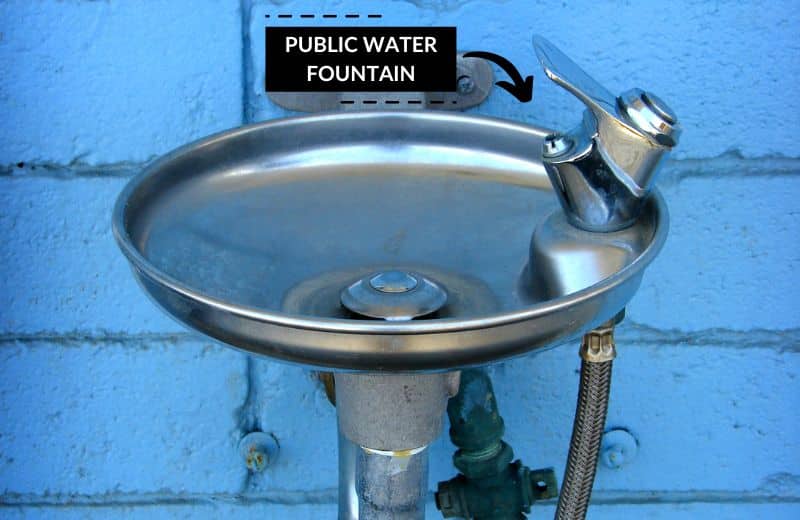
🚰 When Should I Drink from a Public Water Fountain?
Tap water drinking fountains shouldn’t be considered a safe source of drinking water. You should only use a water fountain if no other options are available, and preferably only if the water is first treated.
For instance, if you’re about to catch a flight and you don’t have any water to hand, your only choice may be to drink from a water fountain. In this case, you should only drink enough water to keep you hydrated – don’t drink more than you need.
Check the quality of the water fountain before you decide to take a drink. If the water fountain has visible dirt on the surface or looks derelict, there’s a good chance that it isn’t being maintained by a local authority or company.
Water fountains should never be used to provide drinking water for infants, young children, the elderly, or people with weakened immune systems. These groups are the most susceptible to waterborne illnesses and shouldn’t drink from a fountain without first treating the water.
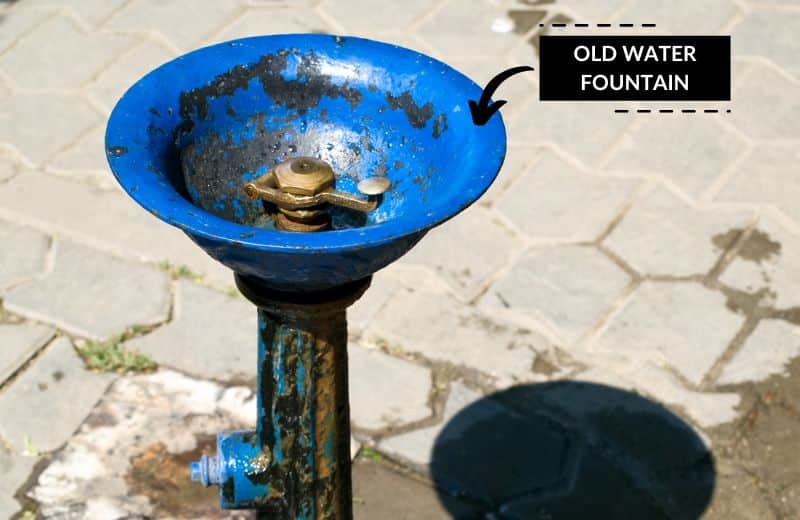
📰 How Can I Safely Drink from a Drinking Fountain?
To avoid becoming sick from drinking fountain water, you should take these precautions:
Avoid Rusty Fountains
First off, avoid water fountains with visible rust or discoloration. Sudden color changes are an indication of metal corrosion, which is typically caused by slightly acidic water in sewage pipes containing metals like lead and copper.
Drinking fountain water that turns pink, red or green may also be contaminated with algae or bacteria. If you have to drink from a rusty fountain, let the water run for several minutes before drinking.
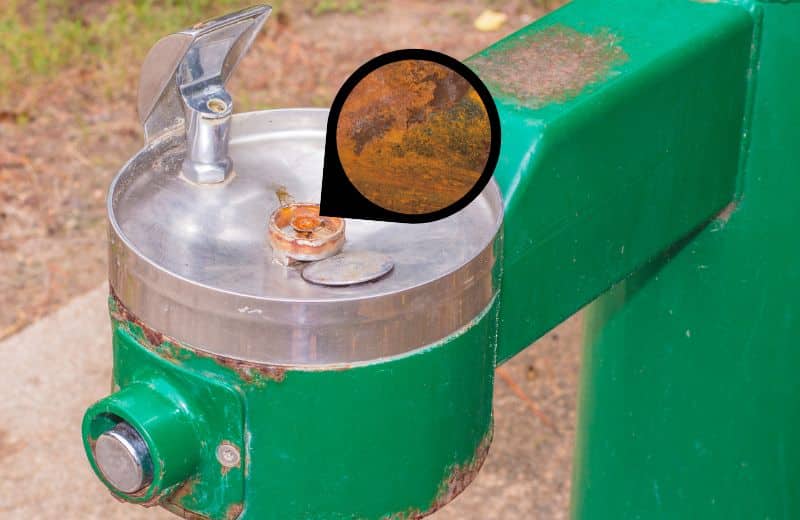
Keep your Mouth Away
Don’t put your mouth directly on the spout of a drinking fountain. A person’s saliva contains thousands of germs and viruses that can contaminate the spout when they touch it with their mouth.
If you must put your mouth on the spout to get water, you should use your wrist or arm to hold it in place while you drink.
Wash your Hands
Wash your hands with soap and running water after drinking from a public fountain.
This will prevent germs from the surface of the fountain itself from coming into contact with your mouth. When possible, carry hand sanitizer with you for extra protection.
Prioritize Bottle Fountains
Water fountains with a nozzle that points downward, intended for filling water bottles, are better than water fountains that have nozzles pointing toward the sky, for drinking straight from.
This is because downward-pointing nozzles are less likely to be contaminated by dangerous pathogens compared to upward-pointing nozzles, which people need to lean directly over to drink from.
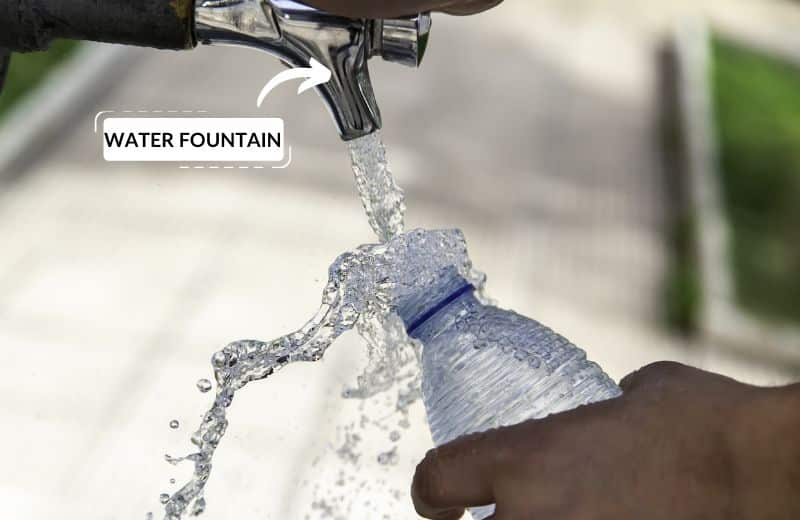
Use a Filtered Water Bottle
Finally, consider bringing a filtered water bottle on your travels. A filtered water bottle is ideal if you regularly drink from public water fountains. Bottle water filters use a replaceable filter that removes harmful contaminants, like bacteria and viruses, from your drinking fountain water.
A filtered water bottle is an easy, convenient way to ensure you’re safely drinking clean tap water from public fountains located in public spaces like airports or bus stations. Bottle water filters are durable and simple to operate. They typically consist of two pieces: a bottle and a lid attached to a straw, with a built-in filtration system.
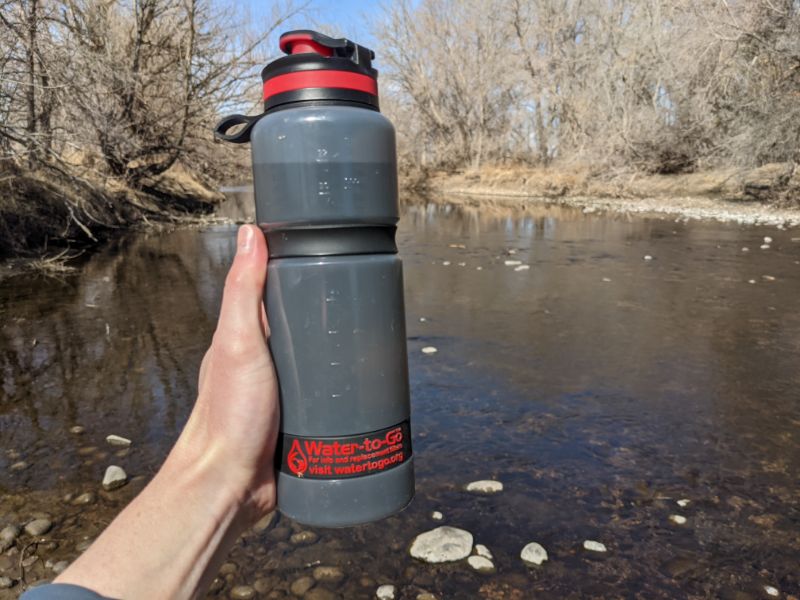
If you own a filtered water bottle, you don’t need to worry about the quality of the tap water in the fountain you’re drinking from, because the water filtration cartridge in the bottle will remove the bad stuff for you.
Learn more about the best filtered water bottles in our detailed guide. 👈

Hmm, okay. I guess you were right about how water fountains with downward-pointing nozzles are less likely to be polluted. Maybe I should propose this idea to my neighborhood committee before they opt for an installation. Our local park has no such amenities which can be a bit of an inconvenience during summertime.